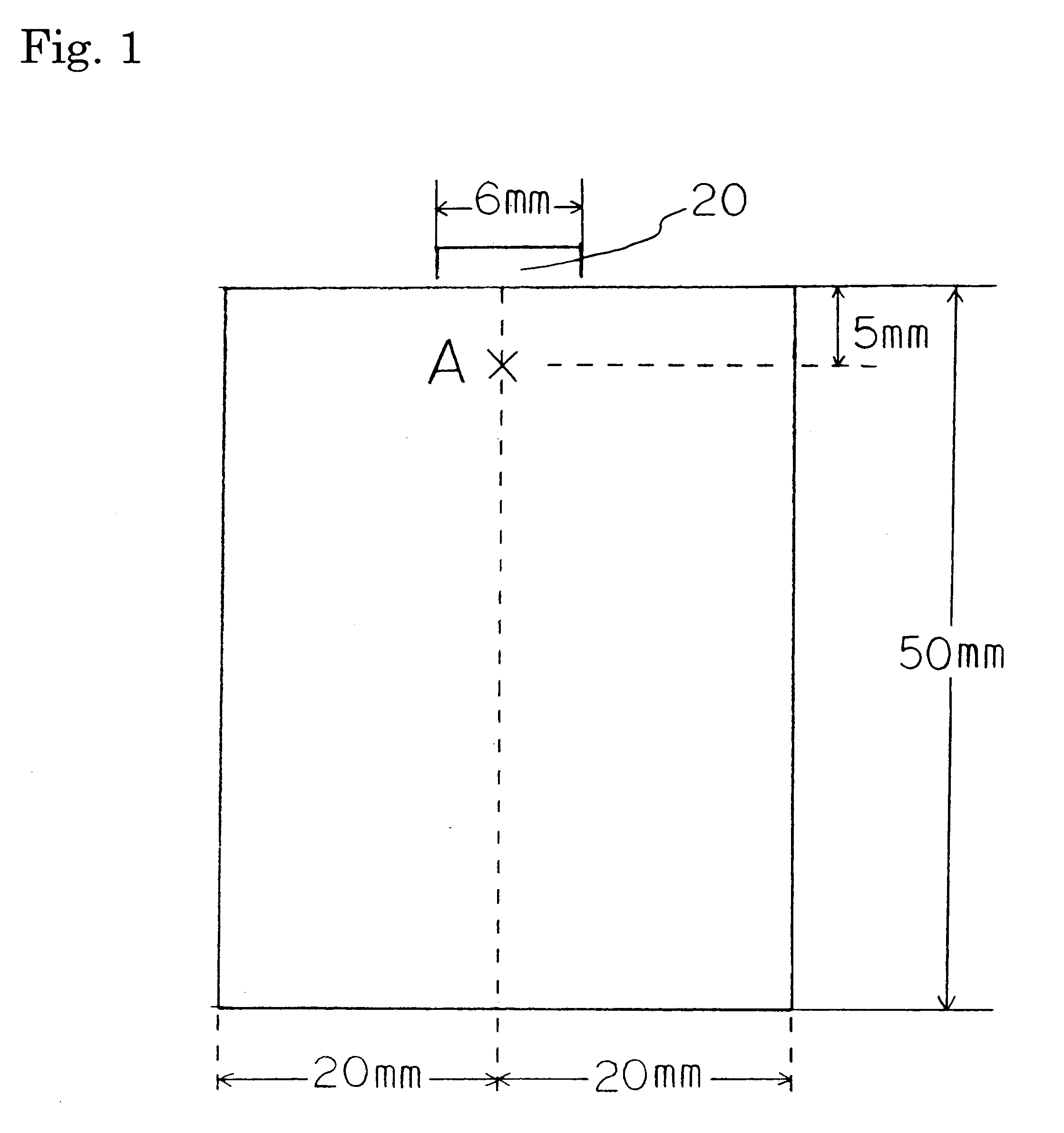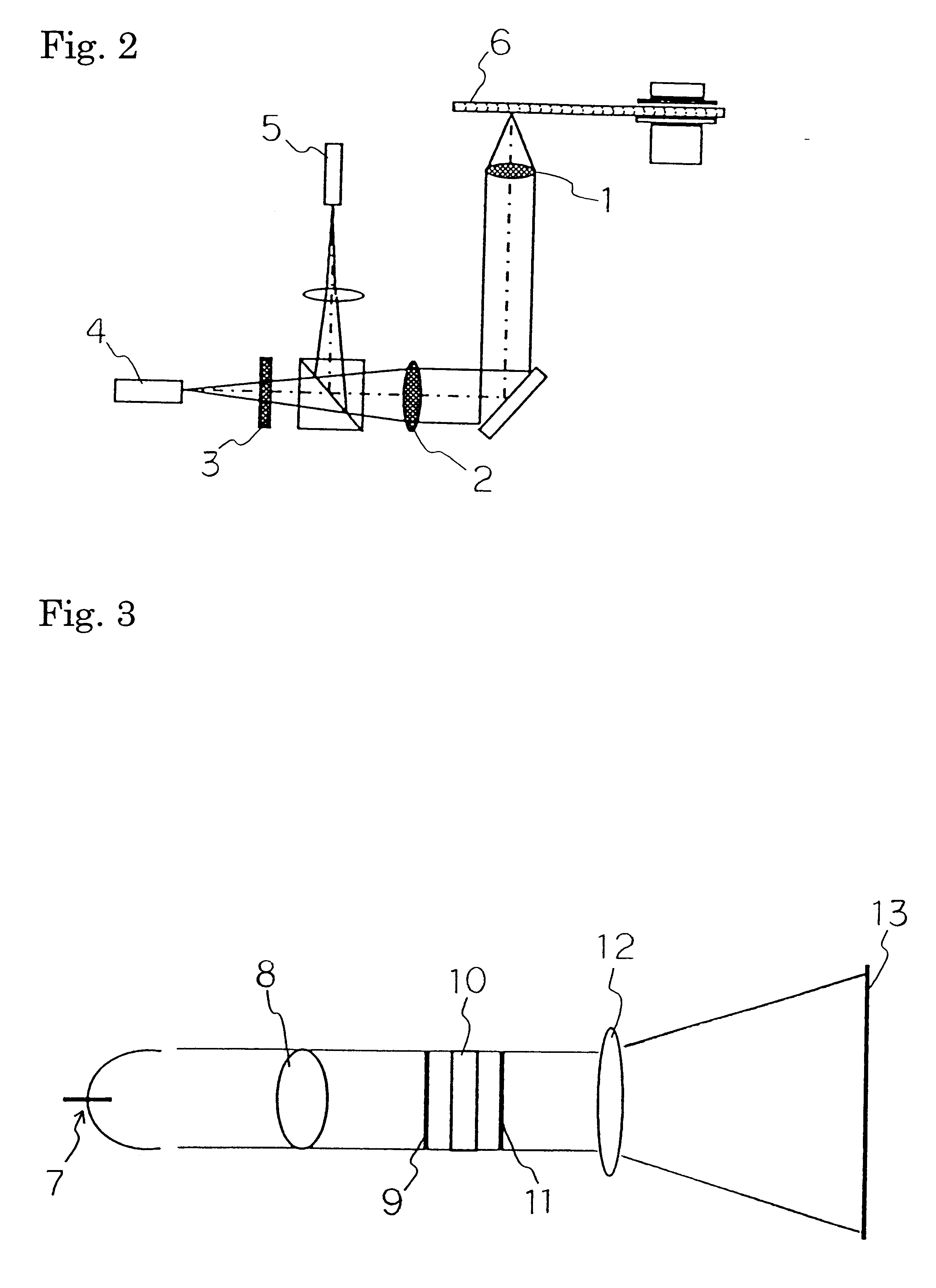Process for the preparation of non-birefringent optical resin and optical elements made by using the resin prepared by the process
a technology of non-birefringent optical resin and resin, which is applied in the field of process for the preparation of non-birefringent optical resin and optical elements made by using the resin prepared by the process, can solve the problems of easy birefringence, low accuracy of optical elements used, and inability to use methyl methacrylate for such optical devices of high accuracy
- Summary
- Abstract
- Description
- Claims
- Application Information
AI Technical Summary
Problems solved by technology
Method used
Image
Examples
embodiment 1
[Embodiment 1]
100 g of tricyclo[5.2.1.0.sup.2.6 ]deca-8-yl methacrylate, 1500 g of methyl methacrylate, 400 g of N-cyclohexylmaleimide, 8 g of lauroyl peroxide, and 4 g of n-octylmercaptan are solved and a monomer mixture is obtained.
Into a separable flask of 51 capacity provided with a stirrer and a condenser, 0.1 g of the above gelled Water-Soluble Polymer (a) and 2500 g of deionized water are added. Then a buffer solution of disodium hydrogen phosphate and sodium dihydrogen phosphate is added, stirred and adjusted at pH7.2 and a suspension medium is obtained. Into this, the above monomer mixture is added and polymerized under the condition of 240 rpm, at 60.degree. C. for 3 hrs under nitrogen atmosphere, and polymerized at 98.degree. C. for 2 hrs and resin particles are obtained (polymerization rate is 99% measured by the weight method). After washing the particles with water, dehydration, and drying, molding process is carried out by using the injection molding machine IS-50EP (...
embodiments 2 to 5
[Embodiments 2 to 5, Comparison Embodiments 1 to 7]
Using the monomer mixture as shown in Table 1, test pieces for evaluation of characteristics are formed as same as Embodiment 1.
With regard to the resin particles and the test pieces obtained in Embodiments 1 to 5 and Comparison Embodiments 1 to 7, orientational birefringence, birefringence of the molded articles, saturated water absorbency and glass transition temperature (hereinafter "Tg") are measured and the signal-reading test is carried out. The result is shown in Table 1. As well, with regard to the test pieces obtained in Embodiment 1 to 5 and Comparison Embodiment 1, 3 and 4, the screen-projection test is carried out. The result is shown in Table 2. The measurements and the tests are carried out as follows.
(1) Orientational Birefringence
1 g of each of the resin particles obtained by the suspension polymerization is dissolved in 6 g of tetrahydrofuran, and coated on a glass substrate and then the surface of which is uniforam...
PUM
| Property | Measurement | Unit |
|---|---|---|
| Mass | aaaaa | aaaaa |
| Mass | aaaaa | aaaaa |
| Fraction | aaaaa | aaaaa |
Abstract
Description
Claims
Application Information
 Login to View More
Login to View More - R&D
- Intellectual Property
- Life Sciences
- Materials
- Tech Scout
- Unparalleled Data Quality
- Higher Quality Content
- 60% Fewer Hallucinations
Browse by: Latest US Patents, China's latest patents, Technical Efficacy Thesaurus, Application Domain, Technology Topic, Popular Technical Reports.
© 2025 PatSnap. All rights reserved.Legal|Privacy policy|Modern Slavery Act Transparency Statement|Sitemap|About US| Contact US: help@patsnap.com



